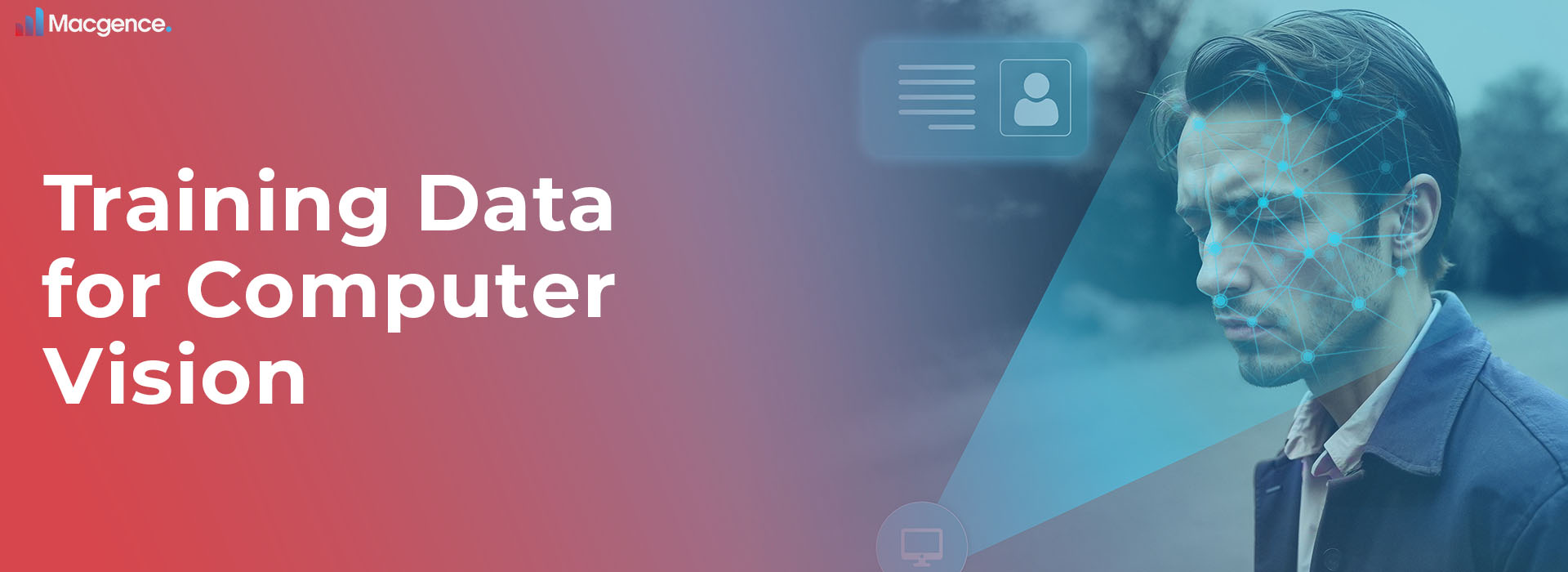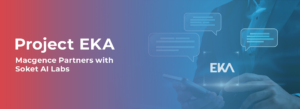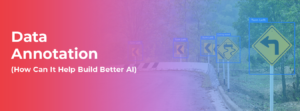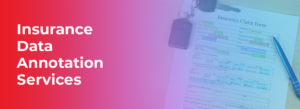Optimize Your AI/ML Models With Training Data for Computer Vision
When it comes to computer vision, training data for computer vision is the vital thing that professionals look for. With accurate and sufficiently diverse data, your computer vision system will be capable of discovering ways to identify objects in images and videos as it should be. This blog will examine computer vision, its needs, use cases, benefits, and more. So let’s get started!
What is Computer Vision Training Data, and Why Do You Need it?
Computer vision training data is a group of images and labelings used to train a machine learning (ML) algorithm to recognize certain items or objects. This data is usually gathered by labeling many photos by hand and then using the labels to train the computer vision algorithm.
The need for significant training data is an essential challenge in developing computer vision models. The algorithm will learn to recognize the preferred objects or features with sufficient AI training data. Additionally, the labels must be accurate for the algorithm to learn from them well.
This can be a complex and time-consuming task, mainly if the objects or capabilities are very small or hard to distinguish from one another. However, training data is critical for developing dependable and accurate computer vision systems.
Famous Use cases for computer vision

Agriculture
Training data for computer vision helps crop health monitoring, disease detection, and resource optimization in precision agriculture. It helps to increase crop yields and promotes sustainable farming practices.
Create Entertaining Content
In the dynamic entertainment sector, computer vision is utilized for personalized content recommendations based on user preferences, facial recognition integration in video games, and special effects enhancement.
Medical Imaging
Revolutionizing healthcare, computer vision in medical image analysis enhances diagnostic accuracy, supports disease detection, aids surgical procedures, and amplifies the efficiency of healthcare systems overall.
Object Recognition
Training data for computer vision is crucial for real-time environment analysis in the case of self-driving cars. It promotes safer and more dependable autonomous navigation by detecting roadblocks, pedestrians, and others.
Surveillance and Security
Enhancing security, computer vision enables real-time video analysis, tracks individuals, identifies unusual activities, and augments surveillance capabilities for improved performance.
Quality Manufacturing Control
Computer vision aids industries in advanced quality control, precisely measuring dimensions, identifying flaws, and ensuring products consistently meet stringent standards efficiently.
Benefits of using Computer Vision Training Data
There are many benefits to using training data for computer vision. First, it can help to improve the accuracy of algorithms.
- Training data for computer vision can improve the speed of algorithms. By providing a larger dataset, you can reduce the time needed to train an algorithm.
- It can help to improve the robustness of algorithms. Computer vision training data can reduce algorithm error by providing a more diverse data set.
- It helps to improve the interpretability of algorithms. Computer vision training data can help increase algorithms’ transparency by providing a more diverse set of data.
- It also helps to improve the usability of algorithms. By providing a more diverse set of data, you can increase the accessibility of algorithms.
How Can Macgence Improve Your Computer Vision Models?

Here is how good AI data from Macgence is helpful for computer vision:
Training Accuracy
Our Quality data ensures that the computer vision model is exposed to diverse and representative examples of the visual information it will encounter in real-world scenarios.
Reduced Bias
We provide high-quality datasets that contribute to reducing biases in training data for computer vision. Ensuring a diverse and balanced data representation minimizes biases associated with specific groups or characteristics.
Real-World Application
Macgence’s good AI data directly impacts the successful deployment and application of computer vision models in real-world situations. It increases the chances of the model delivering meaningful and reliable results when faced with diverse inputs.
Robustness
We incorporate various situations and edge cases to strengthen the training data for computer vision. Thus, your AI model will become more adept at adjusting to backgrounds, lighting, object orientations, and other real-world elements through the training data.
We help you with high-quality data at each stage of your project. Here are data Services by Macgence for Computer Vision:
Data Collection
Large-scale data collection is time-consuming, especially in light of current restrictions and privacy legislation. Furthermore, it takes time and effort to complete a large-scale or complex data collection project when data is needed from many sites. Thus, collaborating with a seasoned partner like us can significantly speed up the development of trustworthy data pipelines.
Data Annotation and Enhancement
Elevate your AI models with accurate data annotation and enhancement. We help you take advantage of the full potential of your data for unparalleled insights and performance. The Data Annotation and enhancement from Macgence help tag specific objects so that computers can identify them for fraud analysis or customer behavior prediction.
Conclusion
Training data for computer vision is the lifeblood of your computer vision algorithm or model. With the relevant, labeled data, everything is rendered functional. The quality of the training data is also an essential factor you should consider when training your model. The work of the training data is more than just to train the algorithms to perform predictive functions as accurately as possible. It is also used to retrain or update your model, even after deployment. This is because real-world situations change often. So, your original training dataset needs to be continually updated. Contact Macgence today to see how our expertise in computer vision can propel your business into a future where possibilities are unlimited.
FAQs
Ans: – Computer Vision is a field of study that enables machines to interpret and understand visual information from the world, similar to human vision.
Ans: – Computer Vision applications are used for traffic sign detection and recognition. Vision techniques are applied to segment traffic signs from different traffic scenes (using image segmentation) and employ deep learning algorithms to recognize and classify traffic signs.
Ans: – Different styles of computer vision include image segmentation, object detection, facial recognition, edge detection, pattern detection, image classification, and feature matching.
You Might Like
February 28, 2025
Project EKA – Driving the Future of AI in India
Spread the loveArtificial Intelligence (AI) has long been heralded as the driving force behind global technological revolutions. But what happens when AI isn’t tailored to the needs of its diverse users? Project EKA is answering that question in India. This groundbreaking initiative aims to redefine the AI landscape, bridging the gap between India’s cultural, linguistic, […]
March 7, 2025
What is Data Annotation? And How Can It Help Build Better AI?
Spread the loveIntroduction In the world of digitalised artificial intelligence (AI) and machine learning (ML), data is the core base of innovation. However, raw data alone is not sufficient to train accurate AI models. That’s why data annotation comes forward to resolve this. It is a fundamental process that helps machines to understand and interpret […]
March 6, 2025
Vertical AI Agents: Redefining Business Efficiency and Innovation
Spread the loveThe pace of industry activity is being altered by the evolution of AI technology. Its most recent advancement represents yet another level in Vertical AI systems. This is a cross discipline form of AI strategy that aims to improve automation in decision making and task optimization by heuristically solving all encompassing problems within […]
March 5, 2025
Use of Insurance Data Annotation Services for AI/ML Models
Spread the loveThe integration of artificial intelligence (AI) and machine learning (ML) is rapidly transforming the insurance industry. In order to build reliable AI/ML models, however, thorough data annotation is necessary. Insurance data annotation is a key step in enabling automated systems to read complex insurance documents, identify fraud, and optimize claim processing. If you […]


 Previous Blog
Previous Blog







